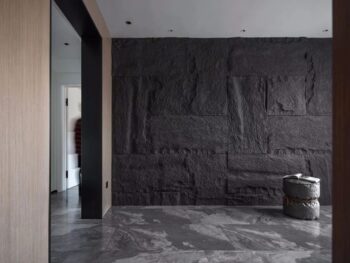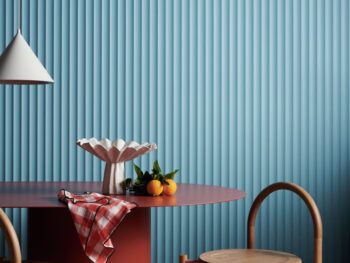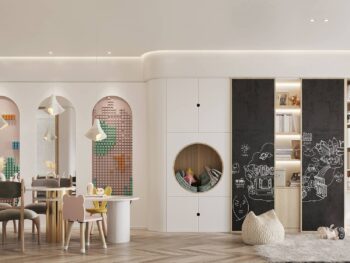
The Exquisite Charm of Traditional Solid Wood Wall Panel
Solid wood wall panels, as a fascinating interior decoration material, have unique charm and wide range of applications. In modern interior design, solid wood wall panels are no longer just a simple building material, they are exquisite works of art that introduce the beauty of nature into our living spaces. Whether you’re creating a cozy farmhouse feel or incorporating natural elements into a modern home, solid wood siding delivers.
In this article, we’ll take an in-depth look at the properties, benefits, different types of solid wood siding and the many ways it can be used in interior design so you can better understand this material and make informed decisions for your renovation project . Whether you’re decorating a new home or undergoing an interior renovation, solid wood siding may be your favorite choice, adding a unique warmth and character to the space.
Related Articles
Explore the Charm of MDF Wall Panels in Decoration
VJ Wall Panel: A Decorative Way to Create Vertical Texture
PVC Wall Panel: Beautiful and Functional Interior Decoration
WPC Wall Panel: Blending Elegance, Functionality and Innovation
I. What is solid wood wall panel?
Wood siding is a siding material used for interior decoration that is made from solid wood, usually cut, processed and made from pieces of wood. These woods are usually from different types of trees, such as pine, oak, birch, walnut, etc., and can be selected according to decorative needs and personal taste.
Solid wood wall panels have the advantages of natural beauty, durability, environmental protection and good decorative properties. However, it should be noted that solid wood wall panels also have some potential problems, including higher price, complicated installation, easy to get damp, deformation and discoloration, etc. . Additionally, solid wood siding requires regular maintenance to maintain its beauty and performance.
Overall, solid wood wall panels are a high-quality, beautiful and environmentally friendly interior decoration material that brings natural warmth and style to a room. However, its features and suitability need to be carefully considered when selecting it to ensure it meets project needs.
II. Where can solid wood wall panels be used?
Solid wood siding can be used in many different places and spaces, depending on your decorating style and personal preferences. Here are some places suitable for installing solid wood siding:
Place |
Description |
Living Room |
Solid wood wall panels can be used to decorate the walls of the living room, bringing a warm and natural atmosphere to the room. You can choose to install solid wood wall panels on the entire wall, or you can choose to decorate part of the wall to create a unique focal point. |
Bedroom |
The bedroom is another ideal place for installing solid wood wall panels. Solid wood wall panels can increase the comfort of your bedroom and add a sense of warmth to your private space. |
Dining Room |
Installing solid wood siding on one wall in your dining room can add a great touch to the dining experience. They can be matched with furniture and decorations to create a delightful dining environment. |
Kitchen |
While using solid wood wall panels in your kitchen requires more maintenance, they can add a natural charm to your kitchen. Installing solid wood wall panels in a portion of your kitchen or as a backdrop can add visual appeal. |
Study Room/Office |
Solid wood wall panels can create a peaceful and focused atmosphere in a study or office, helping to increase productivity. |
Corridors & Entrances |
Installing solid wood siding in a hallway or entry area can enhance the first impression of your home. They can become a focal point that welcomes guests. |
Children’s Room |
Solid wood wall panels are not only suitable for adult rooms, but can also be used in children’s rooms to create a warm environment for children. |
Commercial Space |
Solid wood wall panels can also be used in commercial spaces such as restaurants, cafes, retail stores and offices to enhance the appeal and uniqueness of the space. |
It is important to note that solid wood siding can be affected in humid environments, so extra care needs to be taken when using it in humid areas such as bathrooms.
In addition, different types of wood and textures can be used for different decorative styles, so consider the overall decoration style when choosing solid wood wall panels.
Most importantly, make sure the wall preparation is adequate to ensure that the installation and maintenance of solid wood siding is long-lasting and beautiful.
III. The production process of solid wood wall panels
The process of making solid wood siding typically involves multiple steps, from the raw wood to the final siding product. Here is an overview of the general solid wood wall panel production process:
1. Log harvesting and procurement
The first step in making solid wood siding is harvesting the right logs. Log selection usually depends on the type and quality of wood required. These logs often come from different types of trees such as pine, oak, birch, walnut, etc.
2. Log processing
Once the logs are harvested, they need to be processed. This includes debarking, sawing to the proper size and shape to prepare the lumber for siding.
3. Dry
Wood usually undergoes a drying process to reduce moisture content, ensure stability and prevent the wood from twisting or deforming during use. This can be done by air drying or using a special drying oven.
4. Planing and trimming
Timbers need to be planed, trimmed and sanded to ensure they have a smooth, even surface and the required thickness and size.
5. Select and match
When making solid wood siding, the wood is typically selected and matched to ensure consistency in color, grain, and texture. This can enhance the appearance of the final product.
6. Cut into wall panels
Lumber is cut to create specific dimensions for wall panels. This includes cutting to appropriate width, length and thickness to suit design and decorative needs.
7. Paneling Design
In some solid wood siding, the wood may need to be cut into specific shapes or designs to create various decorative effects, such as paneling designs or intricate patterns.
8. Paint and coating
As desired, siding may require painting, coating, or other surface treatments to add decorative effect, protect the wood, or change color.
9. Final finishing
Finally, the siding undergoes a final touch-up and inspection to ensure quality and appearance meet standards.
10. Packaging and delivery
The finished solid wood wall panels are packaged and then ready to be shipped to the customer or seller.
The process for creating solid wood siding can vary depending on the manufacturer and product type, but it usually includes these basic steps. Manufacturers typically ensure quality standards are met and offer a variety of different wood and design options to suit different decorative needs.
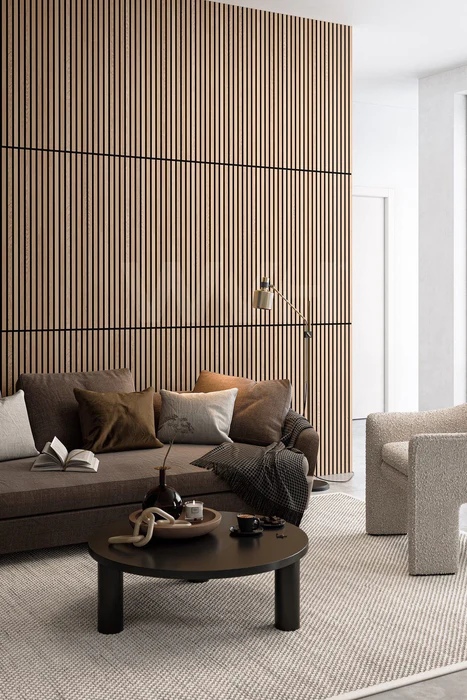
IV. What are the advantages and disadvantages of solid wood wall panels?
Advantages
Solid wood wall panels offer several benefits that make them a popular choice for interior decoration. Here are some of the key benefits of solid wood siding:
1. Natural beauty
Solid wood wall panels retain the natural grain, color and texture of wood, so they have a unique natural beauty. Each piece of wood is unique and brings warmth and comfort to interior spaces.
2. Durability
Quality solid wood siding is extremely durable and can last for years, even decades. They can withstand daily wear and tear and are not easily scratched or damaged.
3. Environmental protection
Solid wood wall panels are renewable materials because they come from trees and can be obtained through sustainable forestry management. This makes it an eco-friendly decor option.
4. Decorative
Solid wood wall panels are suitable for a variety of decorative styles and can be used to create traditional, modern, rustic or other interior decoration effects. They are also suitable for a variety of rooms, from living rooms to bedrooms, dining rooms and offices.
5. Increase home value
In the real estate market, solid wood siding can increase the value of a home as they are considered high-end and attractive decorative elements.
6. Easy to repair
If solid wood siding becomes scratched or damaged, it can be repaired or renovated relatively easily. This means you can extend the life of your siding without having to replace the entire siding.
7. Sound absorption effect
Solid wood wall panels have certain sound-absorbing properties, which can improve indoor sound quality and reduce noise levels.
8. Ambience and comfort
Solid wood wall panels bring warmth and comfort to interior spaces, helping to create a pleasant living environment.
Although solid wood wall panels have many advantages, they also need to consider limitations such as their higher cost and susceptibility to moisture, deformation and discoloration. When choosing solid wood wall panels, consider their properties and suitability to ensure they fit your decorating needs and budget.
Disadvantages
While solid wood siding is attractive in many ways, there are some drawbacks that may influence your choice. Here are some common disadvantages of solid wood siding:
1. High cost
Solid wood siding is typically more expensive than other siding options like drywall, synthetic, or wallpaper. This is because solid wood materials themselves are more expensive, and there are additional costs associated with installing and maintaining solid wood siding.
2. Easily affected by moisture and temperature
Solid wood siding is very sensitive to moisture and temperature changes. A high-humidity environment can cause solid wood to expand, while low humidity can cause shrinkage, which can cause the siding to crack or warp.
3. Requires regular maintenance
Solid wood siding requires regular maintenance to maintain its appearance and performance. This includes regular cleaning, repairing scrapes and scuffs, and repainting or resealing to maintain its appearance and protect the wood.
4. Easily damaged
Solid wood siding is susceptible to scratches, dents, and other physical damage. This may require additional repair or restoration work to maintain its appearance.
5. Color and texture changes
The color and texture of solid wood siding may change over time, depending on the type of wood and how long it’s been exposed to light. Some people may appreciate this natural variation, but it may be a problem for those seeking a consistent look.
6. Restricted resources
Since solid wood siding uses natural wood, this can raise some environmental and sustainability issues. Harvesting wood can have a negative impact on forest ecosystems, so this may be a consideration for those concerned about environmental protection and sustainability.
7. Complex installation
Installing solid wood siding requires certain carpentry skills and specialized tools and is not suitable for everyone. If not installed correctly, the wall panels may be unstable or develop problems.
8. Weight
Solid wood siding is relatively heavy, which can complicate installation, especially if the wall structure is not strong enough.
Although solid wood wall panels have some disadvantages, they also have a unique beauty and texture that can add a natural and warm atmosphere to indoor spaces. Therefore, when choosing whether to install solid wood siding, you need to weigh its advantages and disadvantages and consider your needs, budget, and maintenance commitments.
V. How to install solid wood wall panels?
Solid wood siding installation requires some basic carpentry skills and tools. Here are the general steps:
Tools and materials needed
– Solid wood wall panels
– Saw
– Hammer
– Nails or screws
– Measuring tools
– Electric drill
– Nail gun or screwdriver
– Wall vertical measuring tools (such as a spirit level)
– Siding glue
– Sander and sandpaper
– Paint or sealant (optional)
Installation steps
1. Measure and prepare the wall
Use a measuring tool to measure the height and width of the wall to make sure the siding is cut appropriately. Remove any old siding, dirt or obstructions from the walls.
2. Cut the wall panels
Based on your measurements, use a saw to cut the solid wood wall panels to the desired size. Make sure the cuts are accurate so that the siding completely covers the wall.
3. Prepare the wall
If the wall is uneven, you will need to use a sander and sandpaper to smooth it out. Remove dust and debris from walls.
4. Apply wallboard glue
Apply an even layer of siding glue to the back of the siding and push the siding onto the wall in the desired position. Use a level to ensure the wall panels are installed vertically.
6. Install wall panels
Use a nail gun or screwdriver to secure the siding to the wall. Typically, nails or screws should be spaced regularly along the edges and center of the siding to ensure that the siding is firmly attached to the wall.
7. Fill seams
After all the siding is installed, check the seams between the sidings. If there are any gaps, you can fill them with wood caulk to ensure the wall looks smooth.
8. Paint or seal (optional)
If desired, you can paint or apply a wood sealer to protect solid wood siding and enhance its appearance.
9. Clean up
Clean the work area and remove all wood chips and tools.
Please note that the installation of solid wood wall panels can vary depending on the condition of the wall and the materials used. If you have no relevant carpentry experience, it is best to ask a professional carpenter or decorator to install it to ensure the quality and safety of the work. Additionally, you may need to follow local building codes and permitting requirements before proceeding with installation.
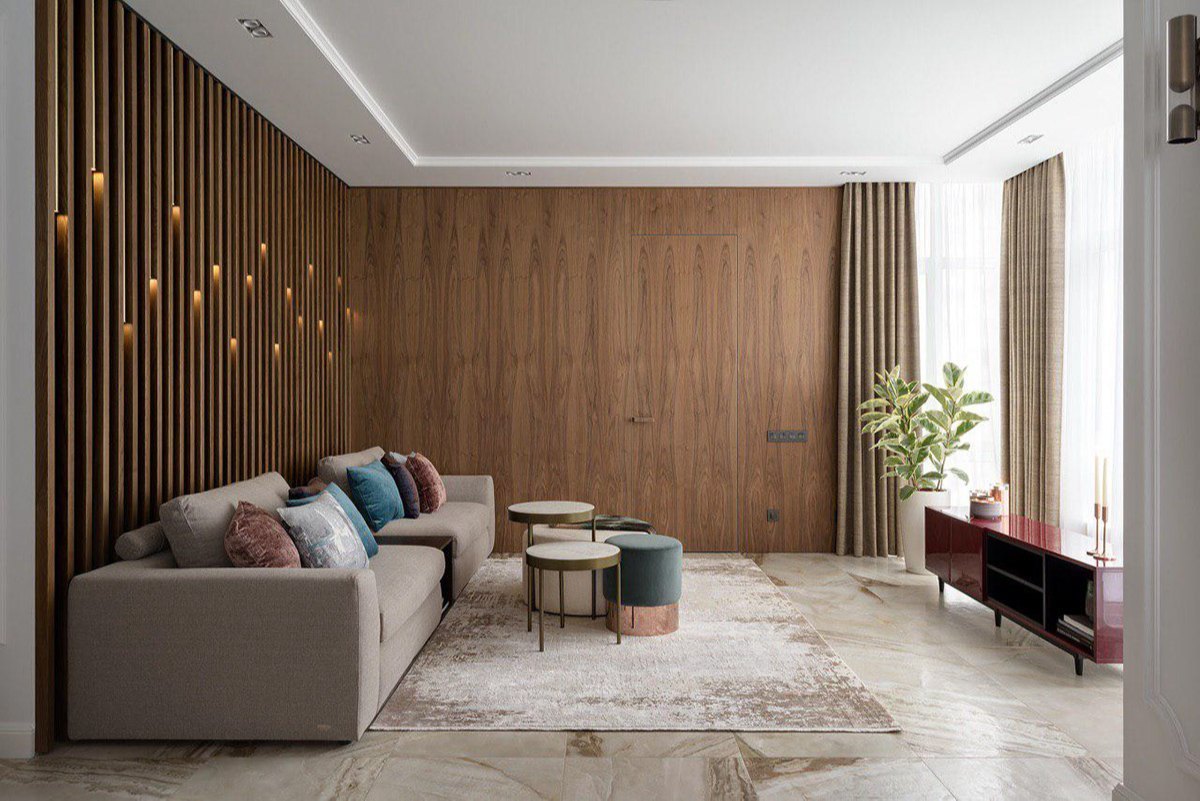
VI. How to maintain solid wood wall panels?
Maintaining and maintaining solid wood siding is an important step in ensuring its beauty and performance. Here are some key steps for maintaining and maintaining solid wood siding:
1. Regular cleaning
Use a soft microfiber or wool cloth to gently wipe solid wood siding to remove dirt, stains and impurities. Avoid using a rag that is too wet as excess moisture may damage the wood surface.
2. Avoid direct sunlight
Try to avoid exposing solid wood siding to strong sunlight for long periods of time, as sunlight can cause the wood to change color and dry out. Use curtains or blinds to block sunlight.
3. Avoid water contact
Avoid allowing water to contact the surface of solid wood siding for extended periods of time, as water can penetrate and damage the wood. If liquid is spilled on the siding, wipe it up immediately.
4. Avoid physical damage
Avoid scratching, bumping or banging solid wood siding as these can cause surface damage and wear. Place furniture pads or protectors where needed.
5. Regular lubrication
Regularly coat solid wood siding with a specially formulated wood care product to maintain the wood’s shine and prevent drying out. Follow product instructions.
6. Repaint or reseal
Periodically repaint or reseal solid wood siding as needed to protect the wood from moisture and stains. Sealants can help prevent moisture from penetrating.
7. Maintain indoor environment
Ensure that the indoor environment maintains stable temperature and humidity. Use an air humidifier or dehumidifier to help maintain proper humidity levels to prevent the wood from expanding or shrinking.
8. Regular inspection
Inspect your solid wood siding regularly to make sure there are no obvious problems, such as cracked, peeling or loose siding. If there is a problem, take prompt repair measures.
9. Be careful about moving furniture
When it’s time to move furniture, move it carefully to avoid scratching or damaging solid wood wall panels. Pads can be placed under the feet of furniture to reduce friction.
10. Regular renovation
Every few years, consider renovating your solid wood siding, which includes sanding, repainting, or resealing, to restore its appearance and protective properties.
Maintenance frequency will vary depending on the type of wood and usage of the siding. When purchasing solid wood siding, it is important to understand the manufacturer’s maintenance recommendations and follow them. Regular maintenance can extend the life of solid wood siding and maintain its beauty, allowing it to continue to function in your home’s décor.
VII. Conclusion
In interior design, solid wood wall panels are not just a material, they are a symbol of lifestyle. Its texture, color and temperature can all bring unique taste and comfort to your home. Whether you prefer a classic style or a contemporary design, solid wood wall panels can adapt to every need and create a distinctive interior.
However, when choosing and using solid wood siding, remember to fully consider your needs, budget, and maintenance commitments. Maintaining the beauty of solid wood siding requires some investment, but trust me, the rewards are worth it. Solid wood wall panels will add timeless charm to your home, becoming the highlight of your home décor while also bringing warmth and contentment to you and your family.
Hopefully this article has given you a comprehensive understanding of solid wood siding and inspired you to be creative in your home design. Whether you’re planning a new renovation project or just sprucing up a corner of your home, solid wood siding can bring a unique charm to your home. Let’s discover the wonders of solid wood wall panels and create an intoxicating, distinctive space for your home. If you have other ideas, please feel free to contact us.
Quick Quotation

